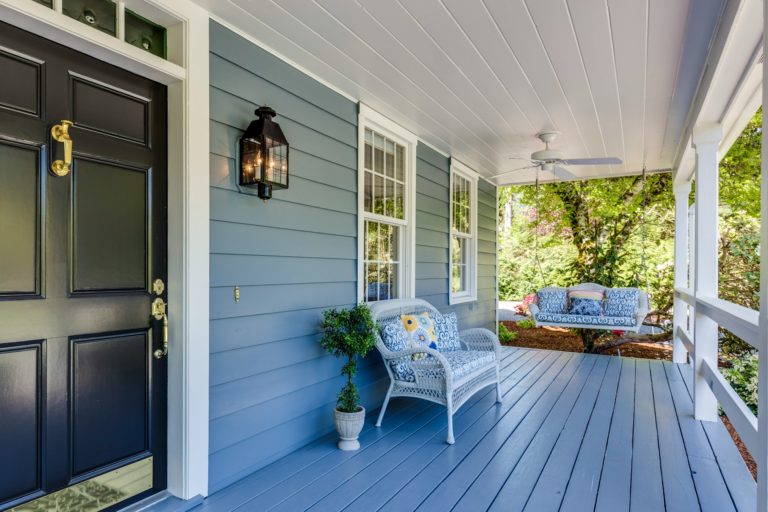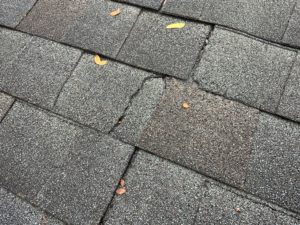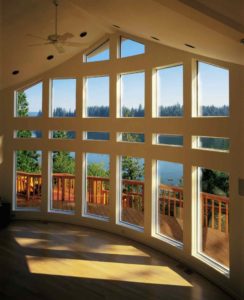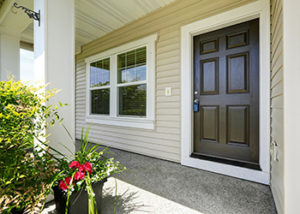Siding is an essential part of your home. It protects against the elements and adds to your home’s curb appeal. However, over time, even the best siding can develop problems that need fixing. Whether it’s cracks, warping, or gaps, damaged siding can affect your home’s look and function.
Knowing how to identify common issues with vinyl and James Hardie siding can save you a lot of trouble. Recognizing these problems early means you can address them before they get worse, safeguarding your home and reducing repair costs.
While some repairs are simple enough to handle yourself, others might require professional help. By learning some DIY fixes, you can tackle minor issues on your own. But it’s equally important to know when the problem is too big to handle alone. Calling in a professional at the right time can prevent further damage and ensure the job is done correctly.
In this guide, we’ll cover everything you need to know about repairing your vinyl and James Hardie siding. From identifying problems and simple DIY fixes to the tools you’ll need and recognizing when it’s time to call a pro. Let’s dive in and keep your siding in top shape!
Identifying Common Problems with Vinyl and James Hardie Siding
Even the best siding can face issues over time. It’s important to know what to look for so you can fix problems early. Here are some common issues with vinyl and James Hardie siding.
Vinyl Siding Issues:
1. Cracks and Holes: Vinyl can crack or get holes from impact, like hail or kids playing baseball. Even small cracks can let in water and pests.
2. Warping and Buckling: If vinyl siding is not installed correctly, it can warp or buckle. This often happens when the panels are nailed too tightly.
3. Fading and Discoloration: Over time, exposure to the sun can cause vinyl siding to fade or change color. This affects the look of your home but doesn’t necessarily damage the siding itself.
James Hardie Siding Issues:
1. Chipping and Cracking: Hardie siding is strong, but it can still chip or crack, especially around the edges.
2. Moisture Damage: If not sealed correctly, James Hardie siding can absorb moisture, leading to swelling or soft spots.
3. Paint Issues: The paint on James Hardie siding can peel or flake off over time. This usually means the siding needs a fresh coat of paint.
Recognizing these problems early can help you take steps to fix them before they get worse.
Simple DIY Fixes for Common Siding Issues
You don’t always need a professional to fix your siding issues. Here are some simple DIY fixes you can try.
Fixing Vinyl Siding:
1. Replacing a Panel: If a panel is cracked or broken, you can replace it. Use a zip tool to unlock the broken panel. Slide it out and fit a new panel in its place.
2. Repairing Small Cracks: For small cracks or holes, use color-matched caulk. Clean the area first, then apply the caulk and smooth it out with your finger.
Fixing James Hardie Siding:
1. Patching Chips and Cracks: For small chips or cracks, you can use a thin layer of cementitious patching compound. Apply it with a putty knife and smooth it out. Once it’s dry, you can paint over it.
2. Repainting: If the paint is peeling, start by scraping off the old paint. Clean the surface well, then apply a primer and a fresh coat of paint.
These fixes can keep your siding looking great and protect your home from further damage. Always follow the manufacturer’s guidelines for any repairs to ensure the best results. If you’re unsure about the repair, it’s a good idea to consult a professional.
Tools and Materials Needed for Siding Repairs
Before starting any repair work, having the right tools and materials is crucial. Here’s a handy list to ensure you’re well-prepared.
Basic Tools:
1. Hammer and Nails: For securing new panels or trim pieces.
2. Utility Knife: Essential for cutting vinyl siding.
3. Pry Bar: Helps remove damaged siding without causing extra damage.
4. Zip Tool: Used specifically for unlocking and locking vinyl siding panels.
5. Putty Knife: Useful for applying patching compounds to James Hardie siding.
Materials:
1. Replacement Siding Panels: Always have some spare panels that match your existing siding.
2. Caulk and Sealant: For filling small cracks and sealing edges. Make sure to match the color.
3. Patching Compound: Needed for fixing chips and cracks on James Hardie siding.
4. Primer and Paint: When repainting sections of James Hardie siding, have a good primer and matching paint.
5. Weather-Resistant Tape: Useful for sealing gaps and cracks effectively.
Having these tools and materials at hand will make your repair process smoother and more efficient. Taking time to gather everything before you begin repairs will save you from unnecessary interruptions. If you’re unsure about a tool or material, a quick search or consultation with a professional can help ensure you have what you need.
When to Call a Professional for Siding Repairs
DIY fixes are great for minor issues, but some problems require professional help. Knowing when to call a professional can save your home from more significant damage and costly repairs down the road.
Signs You Need a Pro:
1. Large Cracks or Holes: Small cracks are manageable, but large ones can compromise the integrity of your siding. A professional can assess and fix these issues properly.
2. Persistent Moisture Problems: If you notice mold, mildew, or persistent dampness, it’s a sign of a more serious issue. Water damage can lead to bigger structural problems if not addressed correctly.
3. Extensive Warping or Buckling: If large sections of your siding are warped or buckled, it might indicate an underlying problem with the installation or the material itself.
4. Widespread Paint Peeling: Peeling paint can be a sign of underlying moisture issues or a failing paint job. A professional can determine the cause and recommend the best fix.
Calling a professional ensures that the job is done right the first time. It prevents minor issues from becoming major problems. Professionals have the expertise and tools to handle complex repairs, saving you time and peace of mind.
Final Thoughts
Keeping your siding in top condition is essential for protecting your home and keeping it looking great. Whether you have vinyl or James Hardie siding, knowing how to identify and fix common problems can make a big difference. Simple DIY fixes can handle minor damage, but it’s important to know when to call a professional to prevent further issues.
At Lighthouse Exteriors, we are dedicated to helping you maintain your home’s exterior. Our team of experts can handle everything from minor repairs to full replacements, ensuring your home stays safe and beautiful. If you need professional siding repairs, contact Lighthouse Exteriors today for reliable and expert service!







